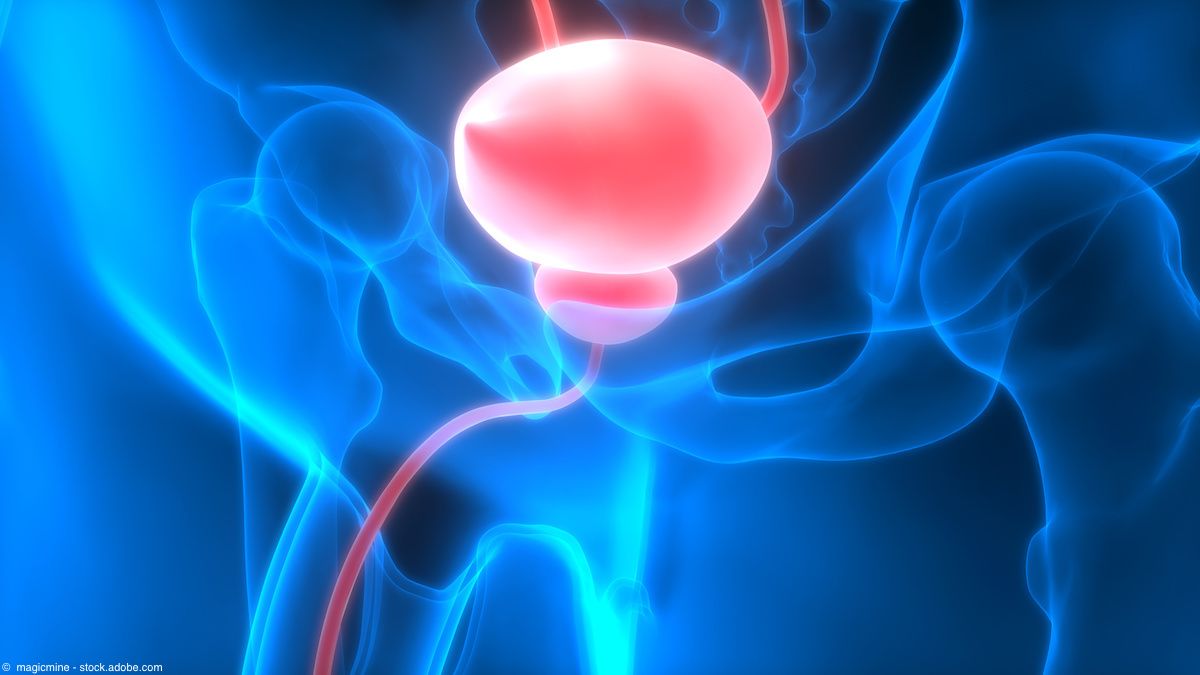News
Article
EV plus pembrolizumab granted priority review for urothelial carcinoma in Japan
Author(s):
The sNDA, which was submitted in January 2024, is supported by findings from the phase 3 EV-302 trial.
Japan’s Ministry of Health, Labour, and Welfare (MHLW) has granted a priority review designation to a supplemental new drug application (sNDA) for the combination of enfortumab vedotin (EV; Padcev) and pembrolizumab (Keytruda) for the first-line treatment of patients with previously untreated locally advanced or metastatic urothelial carcinoma (la/mUC), announced Astellas Pharma in a news release.1
The combination was also granted FDA approval in the US in December 2023.

"The MHLW's priority review for our application for Padcev in combination with pembrolizumab reflects the significance of the EV-302 trial findings and the urgent need for innovative new treatment options. We are pleased by this review designation and hope to quickly bring this treatment option to those who need it most,” said Ahsan Arozullah, MD, MPH, in the news release.1 Arozullah is the senior vice president and head of oncology development at Astellas Pharma.
The sNDA, which was submitted in January 2024, is supported by findings from the phase 3 EV-302 trial (NCT04223856), which showed that the combination of EV plus pembrolizumab extended overall survival (OS) and progression-free survival (PFS) compared with platinum-containing chemotherapy in patients with la/mUC.2
At a median follow-up of 17.2 months, treatment with EV plus pembrolizumab reduced the risk of death by 53% vs chemotherapy. The median OS was 31.5 months (95% CI, 25.4-NR) in the EV/pembrolizumab arm compared with 16.1 months (95% CI, 13.9-18.3) in the chemotherapy arm (HR, 0.47; 95% CI, 0.38-0.58; P < .00001). The OS benefit was observed regardless of whether patients in the control arm received cisplatin or carboplatin, and was not affected by PD-L1 status or existence of visceral metastases.
Further, the combination was shown to improve PFS. The median PFS was 12.5 months (95% CI, 10.4-16.6) with combination compared with 6.3 months (95% CI, 6.2-6.5) with chemotherapy, translating to a 55% reduction in the risk of disease progression or death (HR, 0.45; 95%, 0.38-0.54; P < .00001). The PFS benefit was sustained across all pre-specified subgroups, such as those defined by cisplatin eligibility, PD-L1 status, and visceral metastases.
The confirmed objective response rate (ORR) was 67.7% in the EVP arm compared with 44.4% in the chemotherapy arm. The ORR in the combination arm consisted of a complete response (CR) rate of 29.1% and a partial response (PR) rate of 38.7%. The stable disease (SD) rate was 18.8% and the progressive disease (PD) rate was 8.7%. In the chemotherapy arm, the ORR consisted of a CR rate of 12.5% and a PR rate of 32%. The SD rate was 33.8% and the PD rate was 13.6%.
In the combination arm, 34.6% of patients discontinued treatment due to progressive disease compared with 16.4% of patients in the chemotherapy arm. Adverse event (AE)-related discontinuations occurred in 21.9% and 14.0% of the 2 arms, respectively. Grade 3 or higher treatment-related AEs (TRAEs) occurred in 56% of patients receiving EV plus pembrolizumab and 70% of patients in the chemotherapy arm. Serious TRAEs occurred in 27.7% receiving EV plus pembrolizumab vs 19.6% receiving chemotherapy.
Overall, the open-label EV-302 trial included 886 patients with previously untreated la/mUC with an ECOG performance status of 2 or lower who were eligible for cisplatin- or carboplatin-containing chemotherapy. The median age in both arms was 69 years, and about three-fourths of patients were male. The majority of patients in the trial were White, making up 69.7% and 65.3% of the combination and control arms, respectively. About 97% of patients in both arms had an ECOG performance status of 0 or 1.
Patients were randomized to standard of care chemotherapy consisting of gemcitabine plus cisplatin or carboplatin for a maximum of 6 cycles (n = 444) or to EV (1.25 mg/kg IV) on days 1 and 8 and pembrolizumab (200 mg IV) on day 1 of 3-week cycles (n = 442). The co-primary end points were OS and PFS per blinded independent central review.
The EV-302 trial remains ongoing.
In addition to that study, the combination is also being explored in the ongoing EV-103 trial (NCT03288545), a phase 1b/2 trial assessing EV alone or in combination with pembrolizumab and/or chemotherapy as a first- or second-line therapy in patients with la/mUC and in patients with muscle invasive bladder cancer (MIBC). There are also currently 2 phase 3 trials assessing the combination in MIBC, EV-304 (NCT04700124) and EV-303 (NCT03924895), for use in the second-line setting. EV is also being assessed in the phase 2 EV-202 trial for the treatment of patients with advanced solid tumors. This trial includes an EV plus pembrolizumab arm in patients with metastatic head and neck squamous cell carcinoma.
Currently, the EV/pembrolizumab combination remains under review by the European Medicines Agency in the EU. The combination was also granted FDA approval in the US in December 2023.
References
1. PADCEV (enfortumab vedotin (genetical recombination)) with KEYTRUDA (pembrolizumab (genetical recombination)) Granted Priority Review by Japan's Ministry of Health, Labour and Welfare for First-Line Treatment of Advanced Bladder Cancer. News release. Astellas Pharma Inc. February 15, 2024. Accessed February 16, 2024. https://www.astellas.com/en/news/28911
2. Powles TB, Perez Valderrama B, Gupta S, et al. EV-302/KEYNOTE-A39: Open-label, randomized phase III study of enfortumab vedotin in combination with pembrolizumab (EV+P) vs chemotherapy (Chemo) in previously untreated locally advanced metastatic urothelial carcinoma (la/mUC). Presented at: ESMO Congress 2023; October 20-24, 2023; Madrid, Spain. Abstract LBA6
















